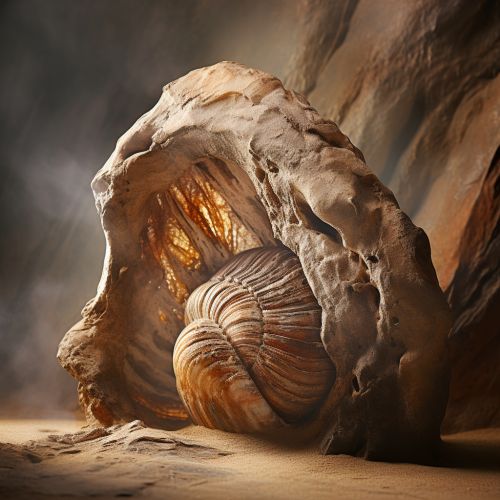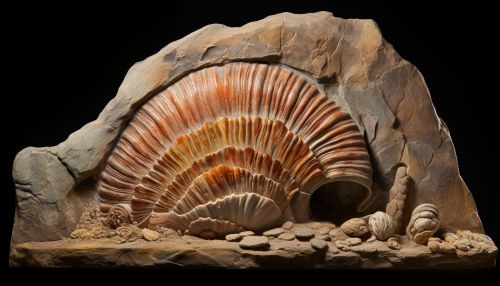Fossil
Introduction
Fossils are the preserved remains or traces of animals, plants, and other organisms from the remote past. The totality of fossils, both discovered and undiscovered, and their placement in fossiliferous (fossil-containing) rock formations and sedimentary layers (strata) is known as the fossil record.
Formation of Fossils
The process of fossilization involves several stages. First, the remains of the organism must be quickly buried to protect them from scavengers and weather. Over time, the remains are subjected to pressure and heat, which can cause them to change physically and chemically, a process known as diagenesis. In some cases, the original material of the organism is replaced by minerals, creating a stone-like replica known as a petrified fossil.
Types of Fossils
There are several types of fossils, including body fossils, trace fossils, and chemical fossils. Body fossils are the preserved remains of a plant or animal's body. Trace fossils, or ichnofossils, are the remains of the activity of an animal, such as footprints or burrows. Chemical fossils, or chemofossils, are chemicals found in rocks that provide an organic signature for ancient life. Microfossils are fossils that are generally not visible to the naked eye.
Fossil Record
The fossil record is the term given to the sum total of all fossils that have been discovered. It provides a chronological record of life on Earth, and is used by paleontologists to study the history of life, including the evolution of organisms.
Paleontology
Paleontology is the scientific study of the life of past geologic periods as known from fossil remains. It includes the study of body fossils, tracks, burrows, cast-off parts, fossilised feces, palynomorphs and chemical residues.


Importance of Fossils
Fossils have a significant role in understanding the history of life on Earth. They provide evidence of the existence, behavior, and evolution of organisms. They also provide evidence of how Earth's climate has changed over time. Fossils can also be used in the study of biostratigraphy, where scientists use fossils to identify and correlate layers of rock in the geologic record.
Fossil Hunting
Fossil hunting, or fossil collecting, is the collection of fossils for scientific study, hobby, or profit. Fossil hunting can involve the collection of large, easily visible fossils, or the collection of microfossils by sieving and microscope work.
Fossil Conservation
Fossil conservation is the practice of conserving and preserving fossils for future generations. This includes the proper collection, preparation, and storage of fossils, as well as the protection of fossil sites.
